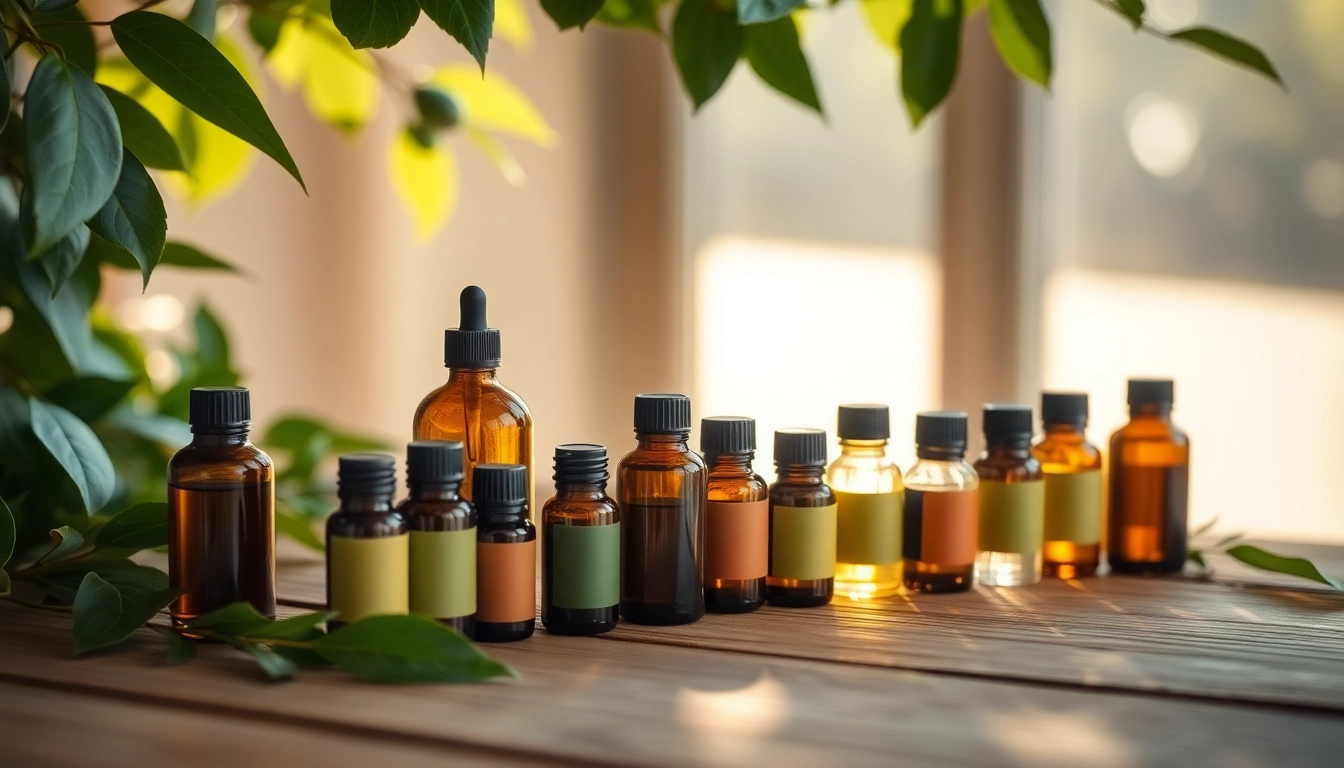
Introduction to Essential Oils
Essential oils have gained immense popularity in recent years, appearing in everything from alternative medicine to aromatherapy products. Their versatility extends from health and wellness applications to household uses and even culinary endeavors, making them an attractive option for consumers looking for natural solutions. Essential oil blends provide a unique approach to enhancing our everyday lives, and understanding their history, benefits, and applications can elevate our experiences with these powerful plant extracts.
What are Essential Oils?
Essential oils are concentrated plant extracts that retain the natural aroma and therapeutic properties of the source plant. They are obtained through various methods, such as steam distillation, cold pressing, or solvent extraction. These oils encapsulate the essence of the plant, making them powerful tools for various applications, including therapeutic, cosmetic, and industrial purposes. A distinguishing feature of essential oils is that they are volatile, meaning they evaporate quickly, allowing them to be easily diffused or absorbed.
Historical Uses of Essential Oils
The use of essential oils dates back thousands of years, where civilizations utilized them for medicinal, spiritual, and cosmetic purposes. Ancient Egyptians are known to have used essential oils for embalming and perfumes, while traditional Chinese medicine incorporated oils into acupuncture and herbal medicine. Similarly, the Greeks and Romans embraced essential oils for their health benefits, often combining them with bathing practices. With the rise of aromatherapy in the 20th century, essential oils found a modern-day application for holistic wellness and relaxation.
Benefits of Using Essential Oils
Essential oils offer a plethora of benefits, including:
- Therapeutic Properties: Many essential oils have anti-inflammatory, antiseptic, and analgesic properties.
- Stress Relief: Certain oils such as lavender and chamomile are known for their calming effects, helping to reduce anxiety and promote relaxation.
- Enhanced Mood: Citrus oils like orange and lemon can uplift mood and boost energy levels.
- Aromatherapy: The practice of inhaling essential oils is said to enhance physical and emotional well-being.
Types of Essential Oils and Their Uses
Popular Essential Oils and Their Properties
There are hundreds of essential oils, each with unique properties. Some of the most popular include:
- Lavender: Known for its calming and soothing properties, often used in sleep aids and relaxation blends.
- Peppermint: Invigorating and refreshing, great for headaches and digestive issues.
- Eucalyptus: Anti-inflammatory and antiseptic, commonly used in respiratory health.
- Lemon: Uplifting and fresh, ideal for cleaning and energizing blends.
- Tea Tree: Renowned for its antimicrobial properties, often used in skincare for acne treatment.
How to Choose the Right Essential Oil for You
Selecting the right essential oil can greatly impact your experience. Consider the following factors:
- Intent: Determine your purpose—aromatherapy, skincare, relaxation, or cleaning—and choose oils that align with your goals.
- Allergies: Be aware of any allergies or skin sensitivities that may restrict your options.
- Quality: Opt for pure, high-quality essential oils from reputable sources to ensure potency and safety.
Common Applications of Essential Oils
Essential oils can be applied in multiple ways, including:
- Aromatherapy Diffusion: Enhancing air quality and mood via diffusers.
- Topical Application: Mixing with carrier oils for skincare.
- Bathing: Adding to bathwater for relaxation and therapeutic benefits.
- Culinary Uses: Incorporating in food and beverages for flavor and health boosts.
Methods of Using Essential Oils
Diffusion Techniques for Essential Oils
Diffusing essential oils is a popular method that disperses the oil into the air, making it easier to inhale. Some techniques include:
- Ultrasonic Diffusers: Use water and ultrasonic waves to create a fine mist of essential oil.
- Nebulizers: Convert essential oils into a fine mist without water, delivering a potent aroma.
- Vaporization: Heat the oils gently to release their fragrance without burning.
Topical Application Guidelines
Using essential oils on the skin can bring numerous benefits, but proper application is crucial:
- Carrier Oils: Always dilute essential oils with a carrier oil (such as jojoba or coconut) to prevent skin irritation.
- Patch Testing: Perform a patch test to check for adverse reactions before applying extensively.
- Aromatherapy Blends: Create customized blends based on specific health needs to enhance effectiveness.
Inhalation and Internal Use Considerations
Inhalation can enhance mood and alleviate stress, but it’s vital to proceed cautiously:
- Direct Inhalation: Inhale essential oils directly from the bottle or a tissue for quick relief.
- Steam Inhalation: Mix essential oils with hot water and inhale the steam for respiratory benefits.
- Internal Consumption: Some oils can be ingested, but always consult a healthcare professional before doing so, as not all essential oils are safe for internal use.
Best Practices and Safety Guidelines
Essential Oil Dilution and Storage Tips
Proper dilution and storage prolong the lifespan and efficacy of essential oils:
- Dilution Ratios: Generally, a 1-2% dilution is recommended for topical use, especially for sensitive skin.
- Storage Conditions: Keep oils in dark glass bottles, away from heat and sunlight, to maintain their potency.
Understanding Possible Reactions and Allergies
While essential oils are beneficial, individual reactions can occur, so awareness is key:
- Skin Reactions: Look out for redness, itching, or burning sensations, which may indicate an allergy.
- Respiratory Issues: Some oils may trigger asthma or allergies; consult a healthcare provider if symptoms arise.
Consulting Professionals for Safe Use
For anyone new to essential oils or with existing health conditions, consulting a knowledgeable professional can provide tailored advice. Aromatherapists or healthcare practitioners can recommend specific oils and applications suited to individual needs.
Integrating Essential Oils into Your Lifestyle
Daily Routines Enhanced by Essential Oils
Incorporating essential oils into daily routines can create a refreshing atmosphere. Consider these ideas:
- Morning Boost: Use citrus oils like grapefruit to uplift energy levels and mood during morning routines.
- Workplace Aromatherapy: Create a calming workspace with lavender or peppermint to enhance focus and reduce stress.
- Evening Rituals: Incorporate relaxing oils like chamomile or sandalwood into evening bath rituals to prepare for sleep.
DIY Recipes for Essential Oil Blends
Creating your own essential oil blends can be a rewarding experience. Here are some simple DIY recipes:
- Relaxation Blend: Combine 3 drops of lavender, 2 drops of bergamot, and 1 drop of frankincense in a diffuser.
- Invigorating Spray: Mix 10 drops of peppermint and 5 drops of eucalyptus in a spray bottle with water for an energizing room spray.
- Skin Nourishing Oil: Blend 5 drops of tea tree oil in 1 tablespoon of coconut oil for a natural spot treatment.
Cultivating Mindfulness with Aromatherapy
Aromatherapy can enhance mindfulness practices like meditation or yoga. Here are tips to integrate essential oils for deeper relaxation:
- Diffusing During Meditation: Use grounding oils like vetiver or cedarwood to enhance focus.
- Essential Oils in Yoga: Apply calming oils to wrists or temples before practice to cultivate a soothing atmosphere.
- Mindful Breathing: Incorporate essential oils into breathing exercises, inhaling deeply after placing a drop in your palms.






